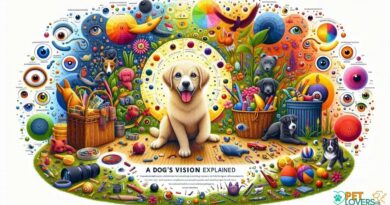What is Observation
What is Observation in Dog Behavior?
Observation is a crucial aspect of understanding canine behavior. It involves closely watching a dog’s actions, reactions, and interactions with its environment and humans. By observing a dog, owners and trainers can gain insights into its emotional state, health, and overall well-being. This practice is essential for identifying any behavioral issues that may arise, allowing for timely interventions and training adjustments.
The Importance of Observation in Training
Effective dog training heavily relies on observation. Trainers must be able to recognize subtle cues that indicate a dog’s readiness to learn or its level of stress. For instance, a dog that is distracted or anxious may not respond well to commands. By observing these behaviors, trainers can modify their approach, ensuring that training sessions are productive and enjoyable for the dog.
Types of Observation Techniques
There are various techniques for observing dogs, each providing unique insights. Direct observation involves watching the dog in real-time, while video recording allows for analysis of behavior over time. Additionally, field notes can be taken to document specific behaviors and patterns. Each method contributes to a comprehensive understanding of a dog’s behavior and needs.
Observation and Socialization
Socialization is a critical phase in a dog’s development, and observation plays a key role in this process. By observing how a dog interacts with other animals and people, owners can assess its comfort level and social skills. This information is vital for facilitating positive interactions and preventing fear-based behaviors that can arise from negative experiences.
Recognizing Signs of Stress Through Observation
Observation is essential for identifying signs of stress in dogs. Common indicators include excessive barking, pacing, and changes in body language, such as tucking the tail or avoiding eye contact. By being vigilant and observant, dog owners can take proactive measures to alleviate stress, creating a more comfortable environment for their pets.
Observation in Health Assessment
Monitoring a dog’s behavior can also provide valuable information about its health. Changes in appetite, energy levels, or bathroom habits can signal underlying health issues. Regular observation allows owners to catch these changes early, leading to prompt veterinary care and better health outcomes for their dogs.
Using Observation for Behavioral Modification
When addressing behavioral issues, observation is a fundamental tool. By understanding the triggers behind a dog’s undesirable behaviors, owners can implement effective modification strategies. For example, if a dog barks excessively at strangers, observing the context of this behavior can help in developing a tailored training plan that addresses the root cause.
Observation and Bonding with Your Dog
Spending time observing your dog not only enhances your understanding of its behavior but also strengthens your bond. Engaging in activities that promote observation, such as playtime or walks, allows for shared experiences that foster trust and companionship. This connection is vital for a harmonious relationship between dogs and their owners.
Technology and Observation
Advancements in technology have revolutionized the way we observe dogs. Smart collars and cameras can track a dog’s activity levels and behaviors, providing data that can be analyzed for patterns. These tools enhance traditional observation methods, offering a more comprehensive view of a dog’s daily life and needs.
Conclusion: The Power of Observation
In summary, observation is a powerful tool in understanding and caring for dogs. By honing observational skills, owners and trainers can improve training outcomes, enhance socialization, and ensure the overall well-being of their canine companions. The insights gained through careful observation can lead to a happier, healthier, and more fulfilling life for both dogs and their humans.



